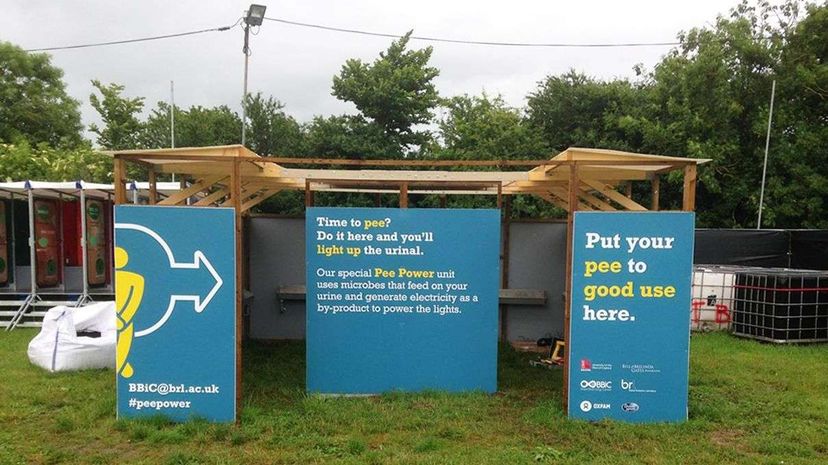
The lights in portable bathrooms can now be powered with pee, a transformation that has far-reaching implications for sanitation in developing countries with limited electricity. The development could also advance safety in refugee camps, where a nightly walk to the bathroom can be dangerous in the dark.
Spanish researchers at the University of the West of England have devised a way for urine and bacteria to react and generate enough energy to light LED tubes. "The technology in the prototype is based on microbial fuel cells," says researcher Irene Merino in a press release. Merino, along with another Spanish researcher, Daniel Sanchez, are leading the project and detailed their findings in the journal Environmental Science: Water Research and Technology.
Advertisement
Basically, the microbial fuel cells act like batteries, with a positively charged anode and a negatively charged cathode.
When the microbial fuel cells are installed inside a urinal, bacteria grow on the anode electrode. These bacteria then begin to decompose the organic material in urine, launching a metabolic process that releases protons and electrons.
The protons move across a semi-permeable membrane from the anode to the cathode, and meet up with electrons traveling through an external electrical circuit. An oxygen reduction reaction, which is a complex electrochemical process, in the cathode then completes the cycle and — voila! — electricity from urine!
The journal article presents the results of two recent, successful field tests. One of the large-scale tests included public urinal cubicles at last month's Glastonbury Festival, the UK's biggest music fest. The urinals were used by thousands and generated enough electricity — about 300 milliwatts — to light the cubicle's interior LED tubes. Another urinal field test showed promising results on the University of the West of England's campus. This prototype generated about 75 milliwatts. Check out a video about that latter test here:
The researchers are now working with a nonprofit organization to test the urinals at refugee camps and in public toilets without lighting. A prototype with a design for female users is in the works.
"The ultimate purpose is to get electricity to light the toilets, and possibly also the outside area, in impoverished regions," says Ioannis Ieropoulos, director of the Bristol BioEnergy Centre. "which may help improve the safety of women and children in countries where they have to use communal toilet facilities outside their homes."
Advertisement